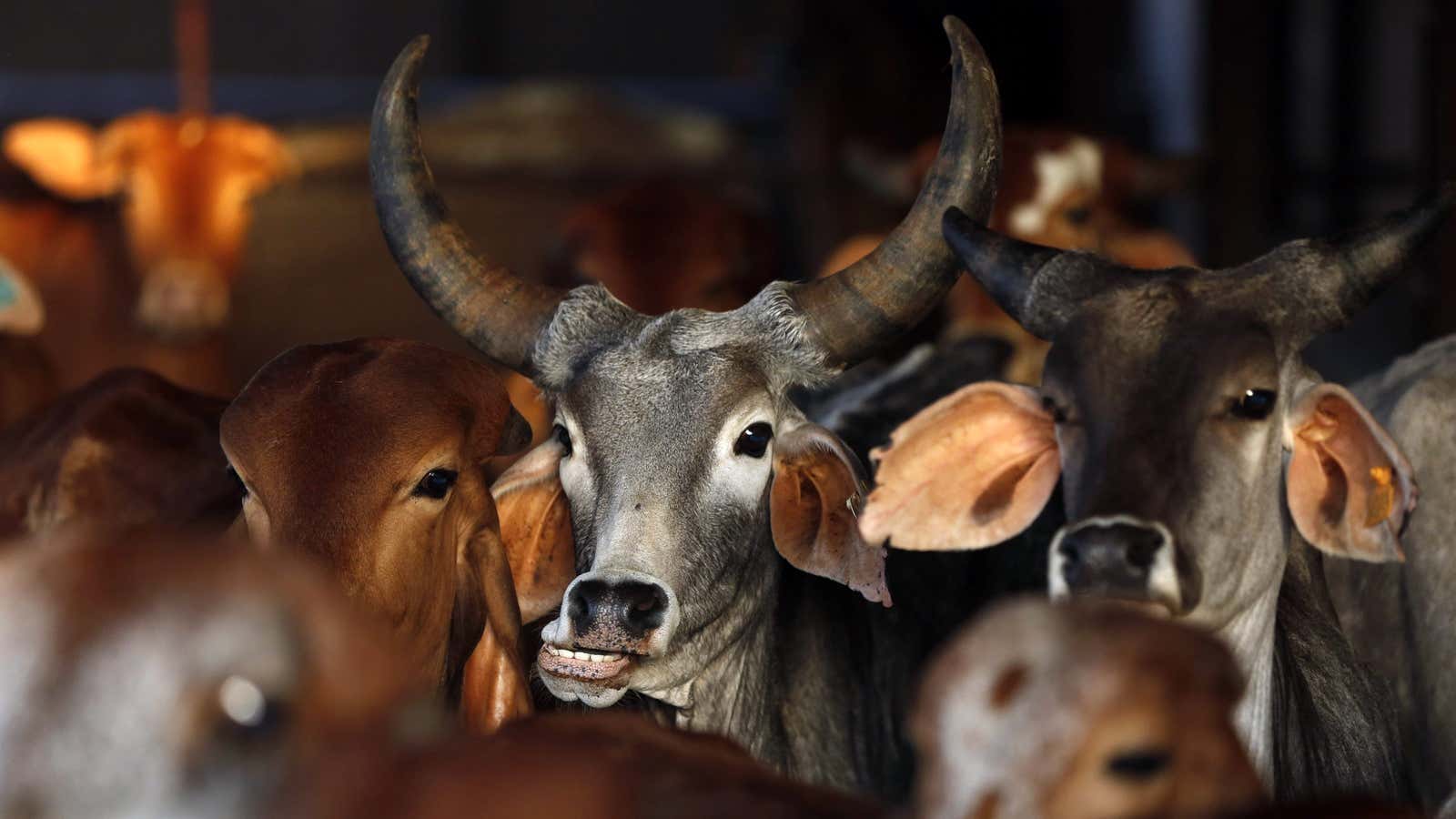Hundreds of thousands of Indian cows are constantly transmitting information about their health directly to their farmers.
For instance, Chitale Dairy in Bhilawadi, Maharashtra, produces 400,000 litres of milk every day, along with data from 10 generations of cows—200,000 of them—through unique radio frequency identification device (RFID) labels. These sensors deliver an array of information, including news of pregnancy, vaccination reminders, and even diet-change recommendations. Dairy officials can access the records through their smartphones and act accordingly.
If applied widely, this technology could considerably improve India’s dairy farming practices and productivity.
India produces 155.5 million tonnes of milk annually and is on track to grow that output by 49% by 2026, becoming the world’s largest milk producer. Setting up a network of internet of things (IoT) sensors that monitors health and fertility-related issues will improve cattle management, with technology helping to identify health deficits and ensure early treatment, besides navigating dry periods when cows don’t lactate.
Aside from sensors, there are other innovations that are helping the dairy farming sector in the country, including in good breeding practices.
Herdman, a mobile app created by veterinary software firm VetWare, captures cattle data with quick response (QR) codes, FactorDaily reported. The app builds a repository for all metrics—feed data, days to puberty and calving, weight, health and disease-tracking, milk yields, and quality of milk, etc. This data is then mined to assess cattle health and find the right bulls, helping create a healthier new generation.
The benefits of such a data-first approach to genomics have been significant for Chitale. Milk productivity surged from 350,000 litres a day three years ago to over 750,000 litres daily today, despite the number of cows remaining more or less unchanged, FactorDaily reported. Chennai’s Hatsun, India’s largest dairy operation with 220,000 cows, is also adopting the technology.
“Software such as Herdman help keep the data accessible. For instance, when a farmer is evaluating a cow to buy, he can scan the QR code tag and read all the historic data to make a more informed buying decision,” Arvind Gautam, the head of US-based cattle genomics company ABS Global’s India operations, told FactorDaily.
However, even as “connected cows” are becoming more common among larger dairy farms, as well as individual farmers, other best practices from around the world are yet to make inroads in India.
Austrian startup SmaXtec, for example, places connected sensors inside cows’ stomachs to transmit data about temperature, the acid-alkaline content, movement, activity, and signs that the animal is in heat—all through wifi. This covert measurement sytem is safer and reduces the chance of missing specific signs. Another way to improve overall health is to maximise grazing, for which US-based electronic compass-maker True North Technologies and Cambridge Industrial Design paired up to develop a connected collar. This collar tracks a cow’s location and movements and data from it can be used in conjunction with IoT grass-length monitors and electronic fencing to guide cows towards greener pastures.
Call it bovine intervention.
